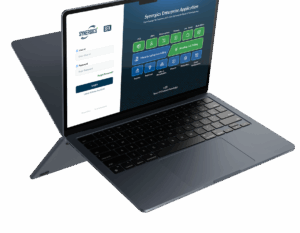The jewellery industry, traditionally rooted in craftsmanship and personal relationships, is experiencing a significant digital transformation. As customer expectations evolve and market dynamics shift, jewellery cloud ERP migration has become more than just a trend—it’s a strategic necessity. Today’s jewellery businesses are increasingly adopting SaaS ERP jewellery solutions to stay competitive, streamline operations, and enhance customer experiences.

The Current State of Jewellery Business Operations
The jewellery industry faces unique challenges that traditional on-premise systems struggle to address effectively. From managing intricate inventory with detailed specifications to handling complex pricing structures and maintaining compliance with regulatory requirements, jewellery businesses require sophisticated solutions that can adapt to their evolving needs.
Many jewellery retailers and manufacturers still rely on outdated systems that create operational bottlenecks, limit scalability, and hinder growth. These legacy systems often result in:
- Fragmented data across multiple platforms
- Limited real-time visibility into inventory and sales
- Difficulty in managing complex product specifications
- Challenges in maintaining accurate pricing across channels
- Inefficient customer relationship management
Understanding Cloud ERP for Jewellery Businesses
Cloud ERP (Enterprise Resource Planning) represents a comprehensive business management solution hosted on cloud infrastructure. Unlike traditional on-premise systems, SaaS ERP jewellery solutions offer a unified platform that integrates all business processes, from inventory management to customer relations, accessible from anywhere with an internet connection.
For jewellery businesses, cloud ERP solutions provide specialized features designed to handle the industry’s unique requirements, including:
Advanced Inventory Management
Modern jewellery software incorporates sophisticated inventory tracking capabilities that go beyond simple stock counts. These systems manage detailed product specifications including metal purity, gemstone characteristics, weight measurements, and certification details. The cloud-based architecture ensures that inventory data is updated in real-time across all locations and sales channels.
Comprehensive Product Cataloging
Jewelry inventory software enables businesses to maintain detailed product catalogs with high-resolution images, 360-degree views, and comprehensive specifications. This level of detail is crucial for both online sales and in-store consultations, allowing staff to provide accurate information to customers instantly.
Multi-location Management
Retail jewellery software solutions provide centralized control over multiple store locations, enabling consistent pricing, inventory visibility, and customer service standards across all outlets. This is particularly valuable for expanding jewellery businesses looking to maintain operational efficiency as they grow.

Key Drivers Behind Jewellery Cloud ERP Migration
1. Enhanced Accessibility and Flexibility
The shift to remote and hybrid work models has highlighted the importance of accessible business systems. Cloud ERP solutions allow jewellery business owners and staff to access critical business information from any device, anywhere. This flexibility is particularly valuable for:
- Sales representatives working with customers off-site
- Management teams monitoring operations while traveling
- Remote staff handling customer inquiries and order processing
- Multi-location businesses requiring centralized oversight
2. Cost-Effectiveness and Predictable Expenses
Jewellery cloud ERP migration eliminates the need for substantial upfront investments in hardware, software licenses, and IT infrastructure. Instead, businesses adopt a subscription-based model that offers:
- Predictable monthly or annual costs
- Elimination of hardware maintenance expenses
- Reduced IT staffing requirements
- Automatic software updates and security patches
- Scalable pricing based on business growth
3. Improved Security and Compliance
Cloud ERP providers invest heavily in security infrastructure that surpasses what most small to medium-sized jewellery businesses can implement independently. These security measures include:
- Advanced encryption for data protection
- Regular security audits and compliance certifications
- Automated backup and disaster recovery systems
- Role-based access controls
- Integration with industry-standard security protocols
For jewellery businesses handling high-value inventory and sensitive customer information, these security features provide essential protection and peace of mind.
4. Real-time Analytics and Business Intelligence
Modern SaaS ERP jewellery solutions incorporate advanced analytics capabilities that provide actionable insights into business performance. These analytics help jewellery businesses:
- Identify best-selling products and seasonal trends
- Optimize inventory levels to reduce carrying costs
- Track customer preferences and buying patterns
- Monitor sales performance across channels and locations
- Make data-driven decisions for business growth
5. Seamless Integration Capabilities
Cloud ERP systems excel at integrating with other business applications, creating a unified ecosystem that eliminates data silos. For jewellery businesses, this means seamless connections with:
- E-commerce platforms for online sales
- Payment processing systems
- Marketing automation tools
- Customer relationship management (CRM) systems
- Accounting and financial management software

Overcoming Migration Challenges
While the benefits of jewellery cloud ERP migration are substantial, businesses often face challenges during the transition process. Understanding and addressing these challenges is crucial for successful implementation:
Data Migration and Quality
Transferring data from legacy systems requires careful planning and execution. Jewellery businesses must ensure that:
- Historical sales and inventory data is accurately transferred
- Product specifications and images are properly migrated
- Customer information and purchase history remain intact
- Data quality is maintained throughout the migration process
Staff Training and Adoption
The success of any ERP implementation depends on user adoption. Comprehensive training programs help staff understand the new system’s capabilities and benefits. This includes:
- Hands-on training sessions for different user roles
- Documentation and quick-reference guides
- Ongoing support during the initial adoption period
- Change management strategies to encourage system usage
Business Process Optimization
Migration presents an opportunity to review and optimize existing business processes. This involves:
- Analyzing current workflows for inefficiencies
- Redesigning processes to leverage cloud ERP capabilities
- Establishing new performance metrics and KPIs
- Creating standardized procedures across all locations
Industry-Specific Benefits of Cloud ERP for Jewellery Businesses
Advanced Gemstone and Metal Tracking
Jewellery software solutions provide specialized tracking capabilities for gemstones and precious metals, including:
- Certification tracking and authentication
- Supplier and origin documentation
- Quality grading and characteristics recording
- Chain of custody maintenance for high-value items
Customer Relationship Enhancement
Cloud ERP systems enable jewellery businesses to build stronger customer relationships through:
- Comprehensive customer profiles with purchase history
- Preference tracking for personalized recommendations
- Automated follow-up communications for special occasions
- Loyalty program management and rewards tracking
Regulatory Compliance Support
The jewellery industry faces various regulatory requirements that cloud ERP systems help address:
- Precious metal reporting and documentation
- Import/export compliance tracking
- Tax calculation and reporting automation
- Audit trail maintenance for regulatory inspections
Future-Proofing Jewellery Businesses
SaaS ERP jewellery solutions position businesses for future growth and adaptation. As technology continues to evolve, cloud-based systems provide the flexibility to incorporate new features and capabilities without major system overhauls. This future-readiness includes:
- Artificial intelligence integration for predictive analytics
- Machine learning algorithms for demand forecasting
- Advanced mobile applications for enhanced customer service
- Integration with emerging technologies like augmented reality for virtual try-ons
Making the Migration Decision
Jewellery businesses considering jewellery cloud ERP migration should evaluate their current systems against future business objectives. Key considerations include:
Business Growth Plans
- Expected expansion in locations or sales channels
- Projected increases in inventory complexity
- Plans for online sales growth
- International expansion considerations
Current System Limitations
- Inability to support remote work requirements
- Lack of real-time data access
- Integration challenges with other business systems
- Scalability constraints
Resource Availability
- IT support capabilities and costs
- Budget for system implementation and training
- Timeline for migration completion
- Staff availability for training and adoption
Selecting the Right Cloud ERP Solution
Choosing the appropriate jewelry inventory software requires careful evaluation of various factors:
Industry Specialization
Look for solutions specifically designed for jewellery businesses with features like:
- Detailed product specification management
- Precious metal and gemstone tracking
- Industry-specific reporting capabilities
- Integration with jewellery-focused third-party applications
Scalability and Flexibility
Ensure the chosen solution can grow with your business:
- Ability to add users and locations as needed
- Modular functionality that can be expanded over time
- Integration capabilities with future technology additions
- Customization options for unique business requirements
Vendor Support and Expertise
Partner with vendors who understand the jewellery industry:
- Experience with similar business implementations
- Ongoing support and training resources
- Regular system updates and feature enhancements
- Strong reputation and customer references
Implementation Best Practices
Successful jewellery cloud ERP migration requires strategic planning and execution:
Phase-Based Approach
Implement the system in manageable phases:
- Start with core modules like inventory and sales
- Gradually add advanced features and integrations
- Allow time for user adaptation between phases
- Monitor performance and adjust as needed
Data Preparation
Ensure data quality before migration:
- Clean and standardize existing data
- Establish consistent naming conventions
- Verify data accuracy and completeness
- Create backup copies of all critical information
Change Management
Prepare the organization for transformation:
- Communicate benefits and expectations clearly
- Address concerns and resistance proactively
- Provide adequate training and support resources
- Celebrate milestones and success stories
Measuring Success
After implementing retail jewellery software, businesses should track key performance indicators to measure success:
Operational Efficiency Metrics
- Reduction in manual data entry tasks
- Improved inventory accuracy rates
- Faster order processing times
- Enhanced customer service response times
Financial Performance Indicators
- Cost savings from reduced IT infrastructure
- Improved profit margins through better inventory management
- Increased sales through enhanced customer service
- ROI achievement timeline
Customer Satisfaction Measures
- Improved customer service ratings
- Increased repeat purchase rates
- Enhanced customer engagement metrics
- Positive feedback on service improvements
The Competitive Advantage
Jewellery businesses that embrace SaaS ERP jewellery solutions gain significant competitive advantages:
- Enhanced Customer Experience: Real-time access to inventory and customer information enables superior service delivery
- Operational Efficiency: Streamlined processes reduce costs and improve productivity
- Market Responsiveness: Rapid access to business intelligence enables quick adaptation to market changes
- Growth Enablement: Scalable infrastructure supports business expansion without system limitations
Conclusion
The migration to cloud ERP represents a strategic transformation opportunity for jewellery businesses worldwide. For brands seeking advanced jewelry software Dubai solutions, cloud-based ERP offers far more than a typical technology upgrade—it becomes an investment in operational excellence, customer satisfaction, and long-term scalability.
As the global jewellery landscape continues to evolve, businesses that adopt specialised SaaS ERP jewellery solutions—especially in competitive hubs like Dubai—position themselves to thrive. With industry-specific features, scalable cloud infrastructure, and cost-efficient implementation, modern jewelry software Dubai platforms are now essential tools powering efficiency, transparency, and sustainable growth for forward-thinking jewellery brands.
The question is no longer whether to migrate to cloud ERP, but rather how quickly businesses can successfully implement these transformative solutions. With proper planning, the right technology partner, and commitment to change management, jewellery businesses can achieve remarkable improvements in efficiency, profitability, and customer satisfaction.
For jewellery businesses ready to embrace digital transformation, the journey begins with selecting the right jewellery software solution that aligns with their unique needs and growth objectives. The future of jewellery retail belongs to those who leverage technology to enhance their craft and serve their customers better than ever before.












